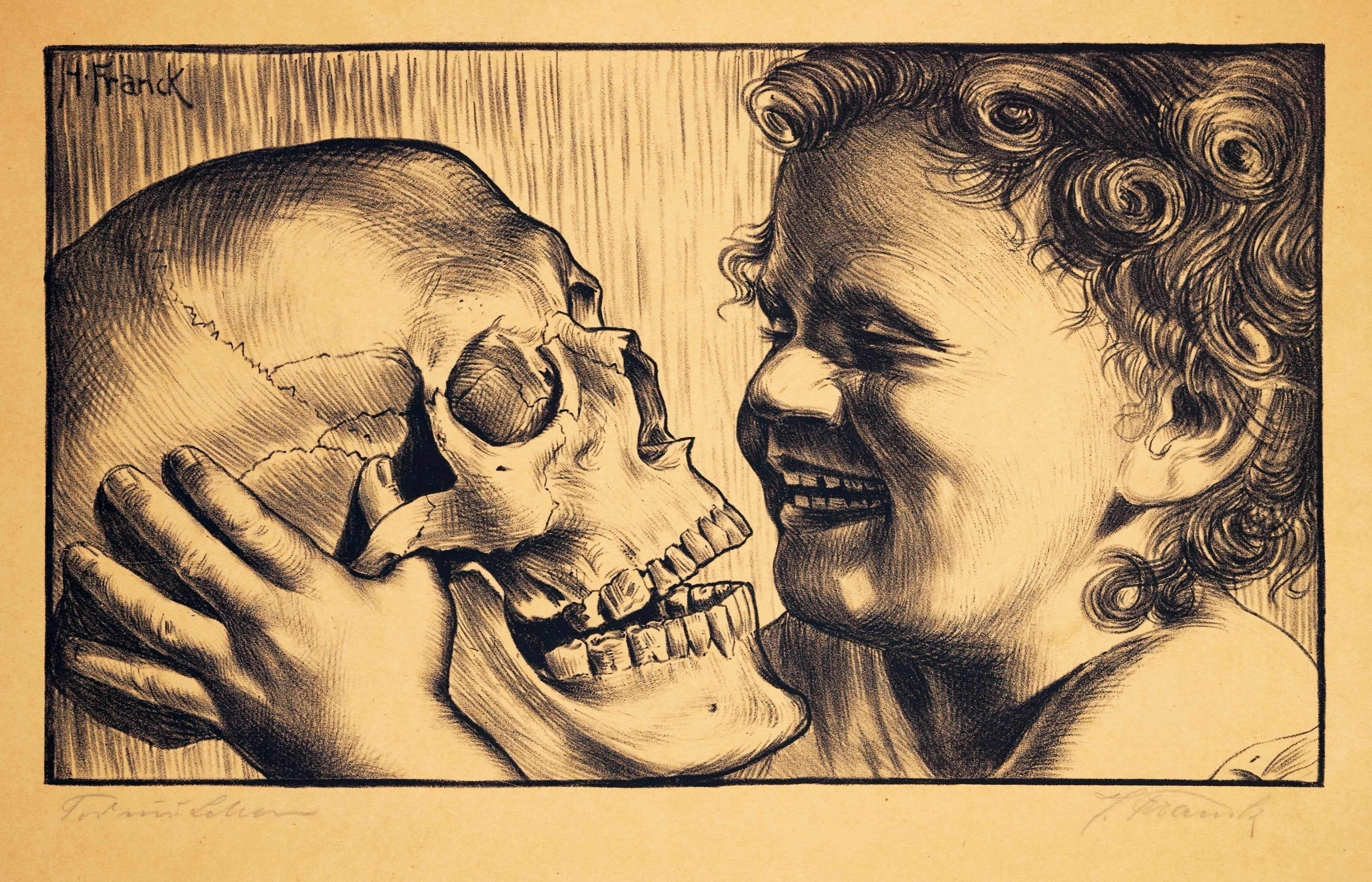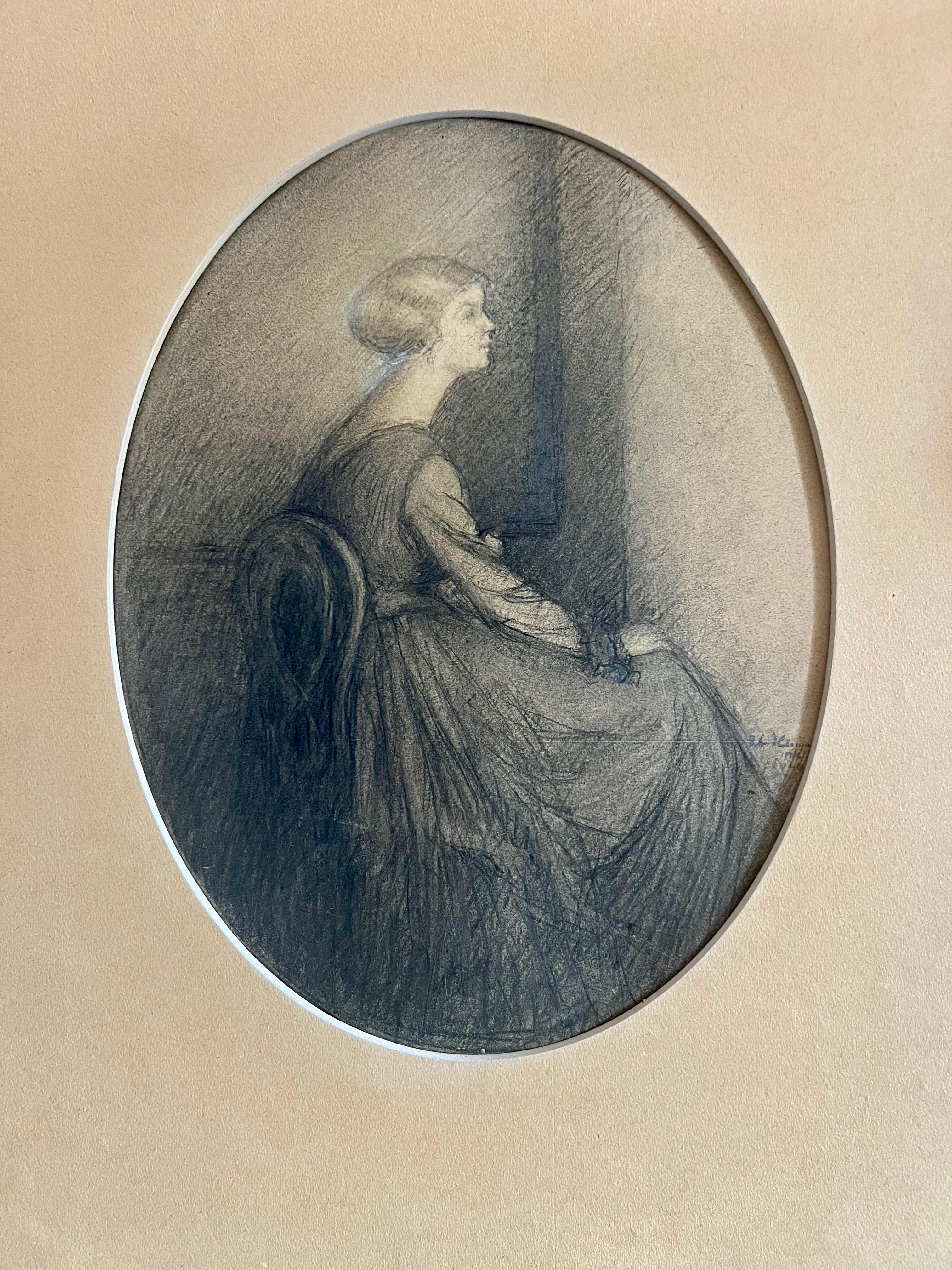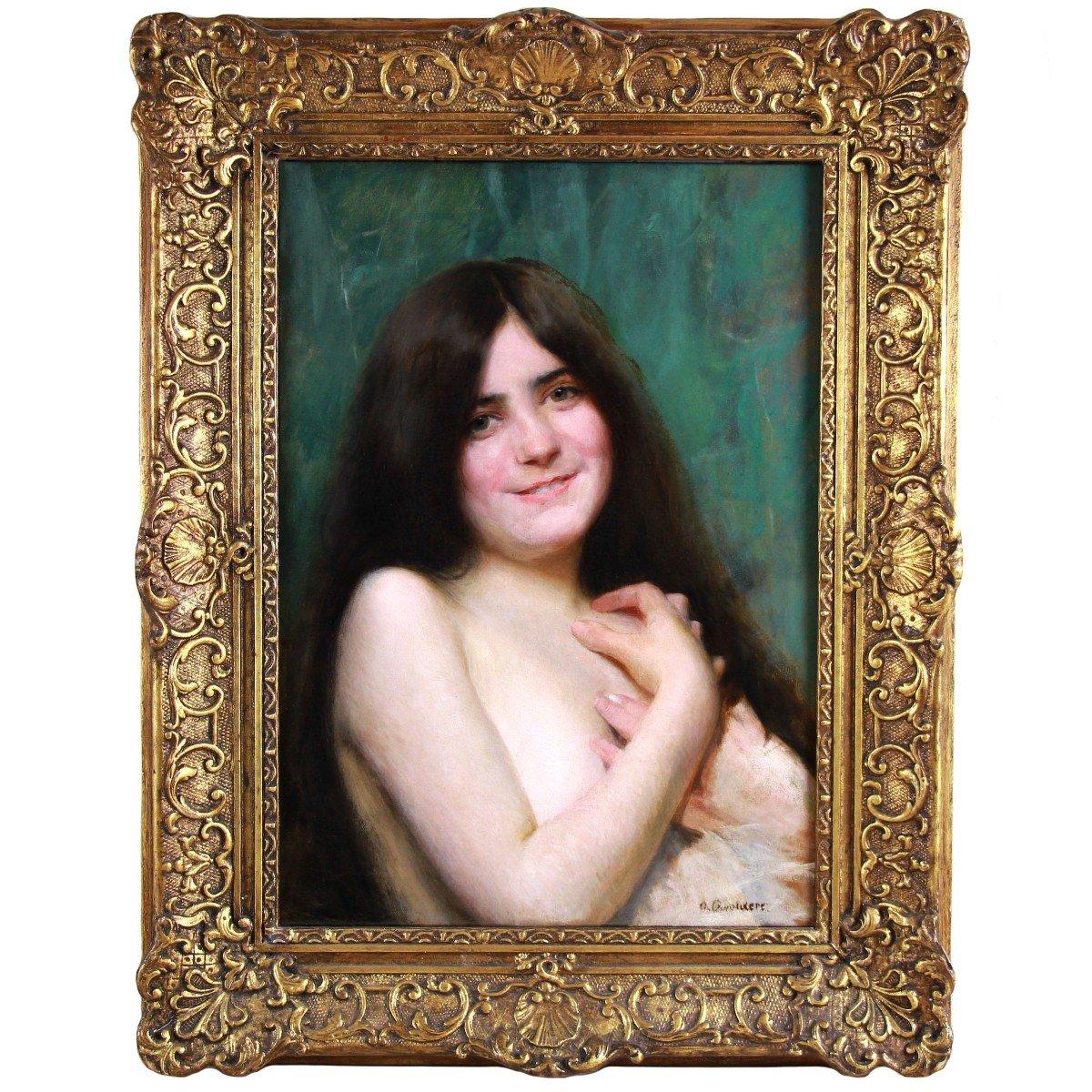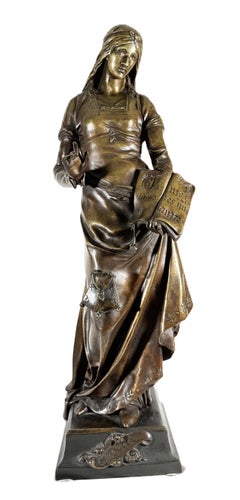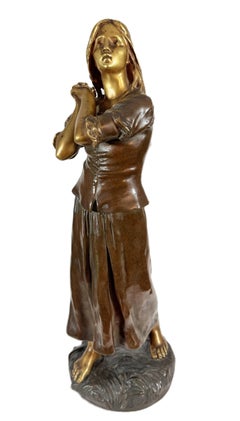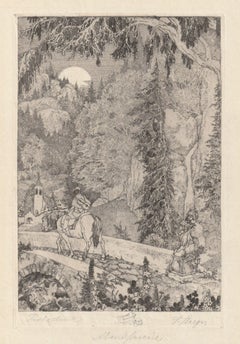Jugendstil Art
to
8
18
11
5
4
5
Overall Width
to
Overall Height
to
17
21
5
3
5
1
1
3
116,674
65,331
53,617
26,864
14,615
9,445
6,044
5,781
4,159
3,014
2,546
2,271
2,234
719
18
11
32
20
18
13
12
9
7
7
5
5
4
4
3
3
2
1
1
1
1
1
19
14
11
8
7
4
2
2
1
1
4
33
10
Style: Jugendstil
Eugene Marioton - Bronze Statue
Located in Berlin, DE
Eugène Marioton
französisch, 1854 - 1933
Muscular Nude Male Bronze Eugene Marioton - Bronze Statue, um 1900
A handsome and very fit partially draped young nude male with rippling mu...
Category
19th Century Jugendstil Art
Materials
Bronze
Antique bronze nude gladiator/ swordsman - Signed "Rudolf Marcuse" + "Gladenbeck
By Rudolf Marcuse
Located in Berlin, DE
Antique bronze nude gladiator/ swordsman - Signed "Rudolf Marcuse" + "Gladenbeck Berlin"
Dimensions:
Sculpture: 16.5 cm high
Base: 6.5 cm high
To...
Category
Early 20th Century Jugendstil Art
Materials
Bronze
Seifert, Victor Heinrich. 1870 Wien - 1953 Berlin “Young athlete with slingshot”
Located in Berlin, DE
Seifert, Victor Heinrich. 1870 Vienna - 1953 Berlin
"Young Athlete with Slingshot" "David"
Large bronze, dark patinated, signed: Prof. V.H. Seifert
Height: 71.5 cm, approx. 85 cm h...
Category
Early 20th Century Jugendstil Art
Materials
Bronze
Französische Bronze Emile Louis Picault „Charity-Bien Faisance“
Located in Berlin, DE
Bronze Emile Louis Picault
"Charity-Bien Faisance," a French bronze figure by Emile Louis Picault.
50 cm
Bronze signed Emile Louis Picault. With cast stamp.
Wonderful work with a ...
Category
1890s Jugendstil Art
Materials
Bronze
Raoul Fançois Larche Patinated bronze figure of a woman
Located in Berlin, DE
FRANCOIS-RAOUL LARCHE 1860 SAINT-ANDRÉ-DE-CUBZAC - 1912 PARIS
Signed on the base with "RAOUL LARCHE," foundry mark "SIOT DECAUVILLE PARIS FONDEUR," and number "R 276."
Total height...
Category
Early 1900s Jugendstil Art
Materials
Bronze
Troubadour, from The Mastersingers of Nuremberg
Located in Middletown, NY
Stipple point etching on tissue-thin handmade Japon paper, 7 5/8 x 5 inches (193 x 126 mm), full margins. Signed, titled, dated, inscribed and numbered 10/25 in pencil, lower margin....
Category
Early 20th Century Jugendstil Art
Materials
Handmade Paper, Etching
Performance by members of the Deutsches Theater zu Berlin / - Ornamental Flow -
By Emil Orlik
Located in Berlin, DE
Emil Orlik (1870 Prague - 1932 Berlin), Ensemble guest performance by members of the Deutsches Theater zu Berlin, 1899. Color lithograph on wove paper, 20 cm x 13.3 cm (image), 29.5 ...
Category
1890s Jugendstil Art
Materials
Paper
Polyphon Record Machine 1890-1900 Music
Located in Berlin, DE
Polyphon Record Automaton 1890-1900 Music
Large luxury model
Sounds beautiful in its original condition and has been retuned.
Records are approximately 40 cm in diameter.
Polyphon ...
Category
Late 19th Century Jugendstil Art
Materials
Metal
Eutrope Bouret (1833-1906) Psyché
Located in Berlin, DE
Eutrope Bouret Bronze
Spyche
Eutrope Bouret (French, 1833-1906)
Late 19th century.
Signed on the base
Bouret (French, 1833–1906) was an important 19...
Category
19th Century Jugendstil Art
Materials
Bronze
Early 20th Century Bronze Figure Sculpture, Shepherd Girl with Staff Statue
Located in Soquel, CA
Wonderful miniature bronze cast figurative sculpture of a young barefoot shepherd girl holding a staff by R. Hobold (German, 19th c). The girl is dressed in a flowing peasant dress a...
Category
Early 20th Century Jugendstil Art
Materials
Marble, Bronze
Ex Libris. Paper, etching, 11x7 cm
Located in Riga, LV
Ex Libris A. Zuyeva
Paper, etching, 11x7 cm
Category
1990s Jugendstil Art
Materials
Paper, Etching
$170 Sale Price
20% Off
Forest idyll / - Soulmate -
Located in Berlin, DE
Rudolf Kaesbach (1873 Gladbach - 1955 Berlin), Forest idyll, around 1915. Bronze, gold and golden brown patina, with cast plinth, mounted on a marble base (5 cm high), total height 36 cm, dimensions of the bronze: 31 cm (height) x 17 cm (length) x 12 cm (width). Weight 4,6 kg, signed on the plinth "R.[udolf] KAESBACH".
- a few rubbed areas, overall in excellent condition for its age
- Soulmate -
The bronze sculpture depicts a young woman in an intimate exchange with a deer that accompanies her. The animal pauses to turn toward her, while the nude beauty slows her pace to look into the deer's eyes and tenderly caress it with her hand. The woman and the deer are in inner harmony. Even though her lips remain motionless, she speaks the language of the animal with which she is deeply connected.
The golden patina, which contrasts with the more naturalistic coloring of the deer, gives the young woman the appearance of a saint, even if she cannot be identified as such. At the same time, she evokes memories of Diana, the goddess of the hunt, or a nymph. But she lacks the ferocity. In her innocent naivety, she is more like a vestal virgin, who is not at home in the solitude of the forest. And yet, the young beauty, moving unclothed in the heart of nature, looks like a priestess with her hair tied up and a carefully carried bowl on her way to a sacred grove.
In order to open up the above-mentioned associations, Kaesbach deliberately designed the female figure in such a way that she cannot be identified as a specific person. He has created an allegory of natural femininity, characteristic of Art Nouveau, in which the deer is far more than a companion animal. It displays the same gracefulness as the young woman, and the inner resemblance between the two makes the deer appear as her other self. In animal terms, it embodies her inner being, which also gives the deer an allegorical character.
About the artist
Rudolf Kaesbach studied sculpture at the Hanau Academy and worked in a bronze foundry in Paris in 1900. In order to work as an independent artist, he opened a workshop in Düsseldorf, where he cast bronzes from models he designed. In 1902 he made his debut at the German National Art Exhibition in Düsseldorf. The following year Kaesbach went to the academy in Brussels. There he was inspired by contemporary Belgian sculpture, especially the work of Constantin Meunier. He moved to Berlin, where he opened a studio in the villa district of Grunewald and devoted himself to life-size marble sculptures and the design of bronzes. From 1911, he regularly presented his works at the major art exhibitions in Berlin, as well as in Düsseldorf and Malmö. Between 1936 and 1939, he also created models for the Rosenthal porcelain factory. From 1939 to 1944, Kaesbach was represented at the major German art exhibitions in Munich.
GERMAN VERSION
Rudolf Kaesbach (1873 Gladbach - 1955 Berlin), Waldidyll, um 1915. Gold und goldbraun patinierte Bronze mit gegossener Plinthe, auf einem Marmorsockel montiert (5 cm Höhe), Gesamthöhe 36 cm, Maße der Bronze: 31 cm (Höhe) x 17 cm (Länge) x 12 cm (Breite). Gewicht 4,6 kg, auf der Plinthe mit „R.[udolf] KAESBACH“ signiert.
- vereinzele beriebene Stellen, insgesamt in einem altersgemäß ausgezeichneten Zustand
- Seelenverwandtschaft -
Die Bronzeplastik veranschaulicht eine junge Frau im innigen Austausch mit einem sie begleitenden Reh. Das Tier hält inne, um sich zu ihr hochzuwenden, während die nackte Schönheit ihren Schritt verlangsamt, um dem Reh ebenfalls in die Augen zu schauen und es zärtlich mit der Hand zu liebkosen. Die Frau und das Reh sind in einem inneren Gleichklang. Auch wenn ihre Lippen unbewegt bleiben, spricht sie die Sprache des Tieres, mit dem sie auf eine tief empfundene Weise verbunden ist.
Die im Kontrast zur naturalistischeren Einfärbung des Rehs aufstrahlende goldfarbene Patina lässt die junge Frau wie eine Heilige erscheinen, auch wenn sich nicht als Heilige identifizierbar ist. Zugleich ruft sie Erinnerungen an die Jagdgöttin Diana oder eine Nymphe hervor. Dafür fehlt ihr allerdings die Wildheit. In ihrer unschuldigen Naivität gemahnt sie vielmehr an eine Vestalin, die freilich nicht in der Waldeinsamkeit zu Hause ist. Und doch wirkt die sich unbekleidet im Herzen der Natur bewegende junge Schönheit wie eine Priesterin, die sich mit hochgebundenem Haar und der vorsichtig getragenen Schale und dem Wege zu einem Heiligen Hain befindet.
Um die gennannten Assoziationen zu eröffnen, hat Kaesbach die Frauenfigur bewusst so gestaltet, dass sie nicht als konkrete Person identifizierbar ist. Damit hat er eine für den Jugendstil charakteristische Allegorie natürlicher Weiblichkeit geschaffen, bei der das Reh weit mehr als ein Begleittier ist. Es weist dieselbe grazile Anmut wie die junge Frau auf und der innere Gleichklag der beiden lässt das Reh als ihr anderen Ich erscheinen. Es verkörpert – ins Animalische übertragen - ihr inneres Wesen, wodurch auch dem Reh ein allegorischer Charakter zukommt.
zum Künstler
Rudolf Kaesbach studierte an der Akademie Hanau Bildhauerei und war im Jahr 1900 in einer Pariser Bronzegießerei tätig. Um sich als eigenständiger Künstler betätigen zu können, eröffnete er in Düsseldorf eine Werkstatt, in der er Bronzen nach selbstentworfenen Modellen goss. 1902 debütierte er auf der Deutschen Nationalen Kunstaustellung in Düsseldorf. Im Folgejahr ging Kaesbach an die Akademie nach Brüssel. Dort wurde er von der zeitgenössischen belgischen Bildhauerei, insbesondere vom Werk Constantin Meuniers, inspiriert. Zurückgekehrt zog er nach Berlin, wo er im Villenviertel Grunewald ein Atelier eröffnete und sich neben dem Entwurf für Bronzen der lebensgroßen Marmorbildhauerei widmete. Ab 1911 präsentierte er seine Werke regelmäßig auf den Großen Berliner Kunstausstellungen, aber auch in Düsseldorf und Malmö. Zwischen 1936 und 1939 fertigte er zudem Modelle für die Porzellan-Manufaktur Rosenthal an. Von 1939 bis 1944 war...
Category
1910s Jugendstil Art
Materials
Bronze
$3,983 Sale Price
20% Off
Reclining Nude on Bed
By Rudolf Bauer
Located in Fairlawn, OH
Reclining Nude on Bed
Lithograph, c. 1910
Signed in pencil lower right and in the plate, lower right
Image size: 7-1/4 x 13"
Sheet size: 12 1/2 x 19 inches
Condition: very good
Some aging to the tan paper
Provenance: Estate of the Artist
Borghi & Company, New York
Rudolph Bauer
1889-1953
Rudolf Bauer was born in Lindenwald near Bromberg, Silesia, in 1889 but his family moved only a few years later to Berlin. In 1905 Bauer began his studies at the Berlin Academy of Art but left the Academy only a few months later to educate himself. The upshot was paintings, caricatures and comical drawings which were published in 'Berliner Tageblatt', 'Ulk' and 'Le Figaro'.
From 1912 Bauer contributed to the magazine and Gallery 'Der Sturm' founded by Herwarth Walden and pivotal to German Expressionism and the international avant-garde. In 1915 Rudolf Bauer participated for the first time in a group show at Walden's gallery. There he met Hilla von Rebay, with whom he began a relationship of many years that was crucial to Bauer's later work. By 1922 Bauer had shown work at about eight exhibitions mounted by 'Der Sturm'. From 1918 he also taught at the 'Der Sturm' art school, where Georg Muche was the director. After the war ended, Bauer was a founding member of the 'November Group' although he did not collaborate closely with the group. In 1919 Bauer joined forces with the painter and architect Otto Nebel and with Hilla von Rebay to found the artists' association 'Die Krater'. Impressionist at the outset, Bauer's early work reveals Cubist and Expressionist influences. By 1915/16 Bauer had switched to an abstract pictorial idiom, which is markedly influenced by Kandinsky. In the early 1920s Bauer was also preoccupied with Russian Constructivism as well as the Dutch de Stijl group. Bauer's decided preference for non-representational painting culminated in 1929 with the foundation of a private museum, 'Das Geistreich', which he directed as a salon for abstract art.
Political developments in Germany forced Bauer to sell some of his work in America from 1932. His agent in America was Hilla von Rebay, who was by now director of the Guggenheim Collection. In 1936 she organized a touring exhibition of non-representational European art that included sixty Rudolf Bauer oil...
Category
1910s Jugendstil Art
Materials
Lithograph
Eugene Laurent (French, 1832-1898) Diana the Huntress
Located in Berlin, DE
LAURENT, Eugene, (French, 1832-1898): Diana the Huntress, bronze,
64 cm high,
signed, resting on a black marble base, in an antique dress with her hunting dog.
Patinated bronze....
Category
Late 19th Century Jugendstil Art
Materials
Bronze
Ex libris. Paper, woodcut, 11x7cm
Located in Riga, LV
Ex libris Olav Tähe
Paper, woodcut, 11x7cm
Category
1990s Jugendstil Art
Materials
Paper, Woodcut
$170 Sale Price
20% Off
Wilhelm/Mozer/Munchen-Nord/Adalbertstr. 31A/Telefon 1939 /Delikatessen.
Located in New York, NY
Vintage Poster for the Wilhelm/Mozer Delikatessen.
Ref:Das fruhe Plakat 1357 Ludwig Holhwein.Plakate der Jahne 1906-40 Tavel VI Kat Nr. 23.
Hohlwein began his career as graphic d...
Category
Early 1900s Jugendstil Art
Materials
Lithograph
Kalliope record Machine slot Machine 10 Plates included
Located in Berlin, DE
The automaton has been completely overhauled and tuned.
The spring housing has been adjusted.
Comb has been completely tuned.
The case has been overhauled.
10 plates are included...
Category
Late 19th Century Jugendstil Art
Materials
Metal
Profile Portrait of a Woman Sitting on a Chair
Located in Stockholm, SE
A finely tuned oval drawing by the Finnish artist Ester Helenius depicting a young woman in profile seated on a chair. The room is suggested only by a diffuse background. Signed and ...
Category
1910s Jugendstil Art
Materials
Paper, Charcoal, Gouache
Woman's Head (Vrouwekop), Marguerite Adolphine Helfrich
By Jan Toorop
Located in Fairlawn, OH
Woman's Head (Vrouwekop), Marguerite Adolphine Helfrich
Drypoint, 1897
Signed lower right in pencil: J Toorop; by later hand
Toorop's model for this print was Marguerite Adolphine H...
Category
1890s Jugendstil Art
Materials
Drypoint
Von Der Pflanze Zum Ornament
Located in Wilton, CT
30 plates of floral designs from the Jugendstil period
Category
Early 1900s Jugendstil Art
Materials
Lithograph
$2,000 Sale Price
20% Off
Polyphon Automat
Located in Berlin, DE
Polyphon Perforated Plate Christmas Tree Stand
Completely overhauled.
Approx.
Width 46 cm
Depth 27 cm
Height 31 cm
The automaton has been completely overhauled and tuned.
Spri...
Category
Late 19th Century Jugendstil Art
Materials
Metal
Polyphon Musikautomat
Located in Berlin, DE
Polyphon with comb (circa 1900) with many original discs in very good condition.
The Polyphon comb music box is functional and has a beautiful sound; everything has been newly tuned.
All tones are present.
The Polyphon music box...
Category
Late 19th Century Jugendstil Art
Materials
Metal
Hebe Par Drouot Edouard Drouot (French, 1859-1945)
Located in Berlin, DE
Bronze, beautifully cast, patinated. Above a fluted round base, the figure of the Greek goddess of youth. Hébé is depicted here rising in a tight-fitting robe before an eagle, the sy...
Category
Early 20th Century Jugendstil Art
Materials
Bronze
Eugène Laurent (1832-1898), The Beachcomber
Located in Berlin, DE
Eugène Laurent (1832-1898),
The Beachcomber
Inscribed "E. Laurent" on the base plate in the cast.
H 63 cm
Eugène Laurent studied at the École des Beaux-Arts in Paris and was awa...
Category
Early 19th Century Jugendstil Art
Materials
Bronze
Death and Life / - United in Laughter -
By Hans Frank
Located in Berlin, DE
Hans Frank (1884 Vienna - 1948 Salzburg), Death and Life, 1911. Lithograph, 18 cm x 31 cm (depiction), 25.5 cm x 38.7 cm (sheet size), signed “H.[ans] Frank” in pencil lower right and inscribed “Tod und Leben” lower left.
- darkened, remains of an old mounting on the verso
- United in Laughter -
Here, Hans Frank refers to the skull as a vanitas motif. In Renaissance and Baroque portraits, this motif symbolizes the transience of the sitter, whose head has become a skull over time. Penitents, such as St. Jerome, often hold skulls in melancholy contemplation. Here, however, the boy stands up for life itself. He boldly grabs the skull and laughs at the absurdity of life and death. The laughter of death joins the laughter of life, and vice versa. The child's thumb penetrates the skull's cheekbone to illustrate the inseparable connection between death and life.
About the artist
Hans Frank studied at the Vienna School of Applied Arts from 1902 to 1906 and then studied painting under Franz Rumpler at the Vienna Academy of Fine Arts from 1907 to 1911. In 1911, he received a substantial travel grant from the emperor, which he used to travel to Switzerland, Paris, London, Belgium, the Netherlands, and Germany. After serving in World War I, Frank moved to St. Marein im Mürztal, returning to Vienna in 1925. He took further study trips to Italy, southern France, and the Austrian countryside. In 1927, Frank became a member of the London Society of Color Printers. An exhibition of his work at the Medici Gallery in London brought him international recognition. He joined the Pasadena Printmakers Society of California and established contacts in Canada. In addition to his highly regarded paintings, Frank primarily worked as a graphic artist. He created over 300 prints and developed a new gradient technique for the fern woodcut with his twin brother, Leo Frank...
Category
1910s Jugendstil Art
Materials
Paper
French Art Nouveau bronze JOAQUÍN ANGLÉS CAÑÉ
Located in Berlin, DE
JOAQUÍN ANGLÉS CAÑÉ (Tortosa, 1859 - Paris, 1911).
Joaquin Anglès Cañé
(born 1859 Tortosa - c. 1925)
Idyll. Original title:
Bronze, dark brown patinated. Sign.
'Idyll', a bronze sta...
Category
20th Century Jugendstil Art
Materials
Bronze
Beautiful late 19th-century bronze sculpture by Mathurin Moreau
Located in Berlin, DE
Beautiful late 19th-century bronze sculpture by Mathurin Moreau
"YOUNG WOMAN ON A ROCK" BY MATHURIN MOREAU (1822-1912)
Young girl with a broken jug,
Bronze circa 1880/1890, France
...
Category
Late 19th Century Jugendstil Art
Materials
Bronze
Original Spartacus Deutsche Staatsoper Berlin vintage theater poster
Located in Spokane, WA
Original poster: Spartacus, Beutsche Staatsoper Berlin (Germany) vintage theater poster.
Printed in 1973 to promote a performance of Spartacus ...
Category
1970s Jugendstil Art
Materials
Lithograph
Emile Louis Picault (1833-1915), 'Le Penseur'
Located in Berlin, DE
Emile Louis Picault (1833-1915), 'Le Penseur', patinated bronze mounted on a marble base, H 30 - 33 cm (bronze - total)
A fantastic quality Bronze of
Emile Louis Picault
Signed o...
Category
Late 19th Century Jugendstil Art
Materials
Bronze
Tea Time Photography Print Limited Edition Signed
Located in Slovak Republic, SK
Print. Limited edition 15. Signed by the author.
Category
21st Century and Contemporary Jugendstil Art
Materials
Color, Digital
$445 Sale Price
68% Off
Im Schnee
Located in Wien, 9
The drawing by an anonymous artist, featuring a young woman in the snow, struggling to protect herself from a large figure in a black cout. This scene is framed by the tumultuous ele...
Category
Early 20th Century Jugendstil Art
Materials
Paper, Gouache
Titania
Located in Wien, 9
The fine drawing by an anonymous artist, beautifully depicting Titania, the enchanting queen of the fairies from Shakespeare's "A Midsummer Night's Dream." Rendered in the exquisite ...
Category
Early 20th Century Jugendstil Art
Materials
Paper, Gouache
$948
untitled (Young Woman Washing)
By Rudolf Bauer
Located in Fairlawn, OH
untitled (Young Woman Washing)
Lithograph, c. 1910
Signed in pencil lower right; signed in the plate lower right (see photo)
Image size: 11 x 5-1/8"
Sheet size: 18 7/8 x 12 5/8 inches
Condition: Very good
Aging to the tan paper it is printed on
Provenance: Estate of the Artist
Borghi & Company, NYC
Rudolph Bauer
1889-1953
Rudolf Bauer was born in Lindenwald near Bromberg, Silesia, in 1889 but his family moved only a few years later to Berlin. In 1905 Bauer began his studies at the Berlin Academy of Art but left the Academy only a few months later to educate himself. The upshot was paintings, caricatures and comical drawings which were published in 'Berliner Tageblatt', 'Ulk' and 'Le Figaro'.
From 1912 Bauer contributed to the magazine and Gallery 'Der Sturm' founded by Herwarth Walden and pivotal to German Expressionism and the international avant-garde. In 1915 Rudolf Bauer participated for the first time in a group show at Walden's gallery. There he met Hilla von Rebay, with whom he began a relationship of many years that was crucial to Bauer's later work. By 1922 Bauer had shown work at about eight exhibitions mounted by 'Der Sturm'. From 1918 he also taught at the 'Der Sturm' art school, where Georg Muche was the director. After the war ended, Bauer was a founding member of the 'November Group' although he did not collaborate closely with the group. In 1919 Bauer joined forces with the painter and architect Otto Nebel and with Hilla von Rebay to found the artists' association 'Die Krater'. Impressionist at the outset, Bauer's early work reveals Cubist and Expressionist influences. By 1915/16 Bauer had switched to an abstract pictorial idiom, which is markedly influenced by Kandinsky. In the early 1920s Bauer was also preoccupied with Russian Constructivism as well as the Dutch de Stijl group. Bauer's decided preference for non-representational painting culminated in 1929 with the foundation of a private museum, 'Das Geistreich', which he directed as a salon for abstract art.
Political developments in Germany forced Bauer to sell some of his work in America from 1932. His agent in America was Hilla von Rebay, who was by now director of the Guggenheim Collection. In 1936 she organized a touring exhibition of non-representational European art that included sixty Rudolf Bauer oil...
Category
1910s Jugendstil Art
Materials
Lithograph
Poster for the Saxon Trade and Art Exhibition, Dresden 1896
Located in Fairlawn, OH
Poster for the Saxon Trade and Art Exhibition, Dresden 1896
Color lithograph poster mounted on heavy linen, 1896
Signed in the stone lower left corner (see photo)
Proof before additi...
Category
1890s Jugendstil Art
Materials
Lithograph
School Girls of Vienna Packing Rations from England and America for the Children
Located in Fairlawn, OH
School Girls of Vienna Packing Rations from England and America for the Little Children
Color lithograph poster, 1921
Signed lower right in the text (see photo)
Created in the Wein (...
Category
1920s Jugendstil Art
Materials
Lithograph
Suspicious Mr. J (grey monochrome vintage portrait Botany nostalgia man hat)
By Rudolf Kosow
Located in Quebec, Quebec
keywords; surrealism, portrait, oil painting, earth tones, figurative painting, strangeness, contemporary surrealistic, unsettling, contemporary figurative painting, dreams, symbolic...
Category
2010s Jugendstil Art
Materials
Canvas, Oil
Abutilon Auicennae (drawing paper botany nostalgic lady chignon hair bun plants
By Rudolf Kosow
Located in Quebec, Quebec
keywords; surrealism, portrait, oil painting, earth tones, figurative painting, strangeness, contemporary surrealistic, unsettling, contemporary figurative painting, dreams, symbolic composition, dream, flesh tones, portrait, earth tones, tonalist, nostalgia, early 20th century, naturalist, illustration, grey art, young woman, hair, hair bun...
Category
2010s Jugendstil Art
Materials
Color Pencil, Paper
Three graces. Paper, etching, 12x11cm
Located in Riga, LV
Three graces. Paper, etching, 12x11cm
Category
1990s Jugendstil Art
Materials
Paper, Etching
$265 Sale Price
20% Off
Yellow Blouse (drawing paper vintage girl back portrait hair yellow article)
By Rudolf Kosow
Located in Quebec, Quebec
keywords; surrealism, portrait, oil painting, figurative painting, strangeness, contemporary surrealistic, unsettling, contemporary figurative painting, dreams, symbolic composition, dream, tones, portrait, tonalist, nostalgia, early 20th century, naturalist, illustration, grey art, young woman, hair, hair bun...
Category
2010s Jugendstil Art
Materials
Paper, Color Pencil
Malua Rosea Multiplex (painting monochrome Grey vintage lady Botany flowers)
By Rudolf Kosow
Located in Quebec, Quebec
keywords; surrealism, portrait, oil painting, earth tones, figurative painting, strangeness, contemporary surrealistic, unsettling, contemporary figurative painting, dreams, symbolic composition, dream, men , romantic, flesh tones, portrait, earth tones, tonalist, nostalgia, early 20th century, naturalist, illustration, woman, flora, grey art, yellow shoes...
Category
2010s Jugendstil Art
Materials
Canvas, Oil
$2,536 Sale Price
20% Off
"female Nude" oil on canvas by Otto Scholderer (1834-1902)
Located in Gavere, BE
"female Nude" oil on canvas by Otto Scholderer (1834-1902)"
Franz Otto Scholderer (1834 - 1902) was a German painter.
His work is rooted in Romanticism, with influences from Impres...
Category
1890s Jugendstil Art
Materials
Canvas, Oil
Oil On Canvas "portrait of Mrs. Henroz-Simonis " by Herman Richir dated 1898
Located in Gavere, BE
Herman Richir ( 1866-1942 ) famous Belgian artist , portrait of Mme Henroz Simonis
This one fine example in the Art Nouveau style, very rare to find such a nice example of it .
Pain...
Category
1890s Jugendstil Art
Materials
Canvas, Oil
Oil On Canvas, Art Nouveau XIX century Portrait Lady With Oval Frame
Located in Gavere, BE
"Oil On Canvas, Art Nouveau XIX Portrait Lady With Oval Frame"
Oil on canvas Portrait of a lady, Art Nouveau style, signed Gustav Julius GRÜN (1823-1896)
German school of the 19th c...
Category
1880s Jugendstil Art
Materials
Gold Leaf
Jugendstil art for sale on 1stDibs.
Find a wide variety of authentic Jugendstil art available for sale on 1stDibs. Works in this style were very popular during the 21st Century and Contemporary, but contemporary artists have continued to produce works inspired by this movement. Many Pop art paintings were created by popular artists on 1stDibs, including Rudolf Kosow, Gerald Berghammer, Rudolf Bauer, and Talavera Ballon. Frequently made by artists working with Paper, and Lithograph and other materials, all of these pieces for sale are unique and have attracted attention over the years. Not every interior allows for large Jugendstil art, so small editions measuring 2.76 inches across are also available. Prices for art made by famous or emerging artists can differ depending on medium, time period and other attributes. On 1stDibs, the price for these items starts at $200 and tops out at $149,500, while the average work sells for $1,700.
